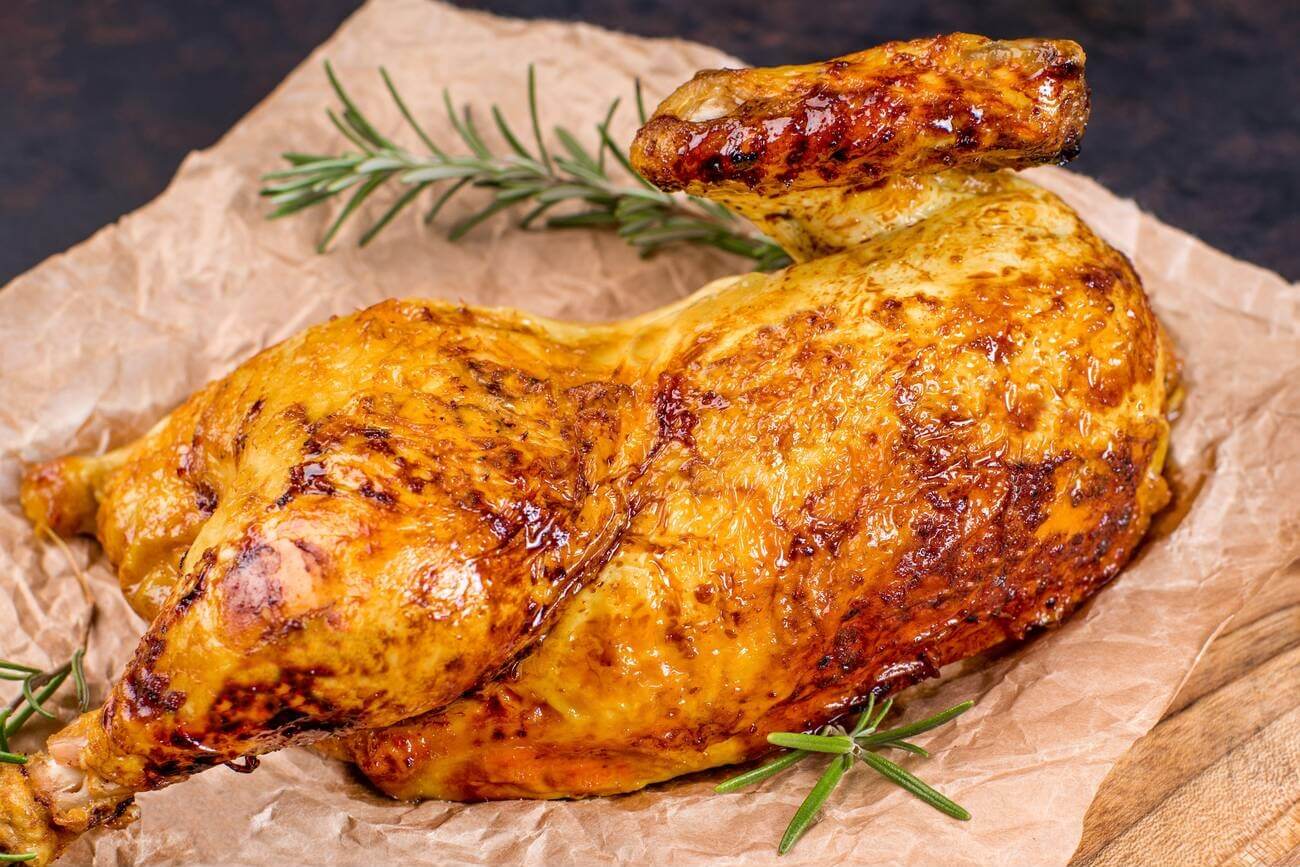Brining – a term that might sound complex but is, in fact, a simple and transformative technique in the culinary world. When it comes to cooking chicken, brining can be the difference between a good meal and a great one. In this comprehensive guide, we delve into the art of preparing a perfectly brined half chicken, a dish that promises to tantalize your taste buds and elevate your cooking prowess.
Why brine, you might ask? Brining, essentially a process of marinating the chicken in a salt-based solution, works wonders in enhancing the flavor and moisture of the chicken. It’s a secret weapon used by chefs to ensure that every bite is succulent and packed with flavor. Whether you’re a seasoned cook or a beginner, this guide is tailored to help you master the technique of brining and cooking half a chicken to perfection.
In the following sections, we will explore everything from selecting the right type of chicken for brining to various cooking methods like roasting, grilling, and even air frying. We’ve also included a detailed FAQ section to answer some of the most common questions related to brined chicken cooking. So, let’s embark on this culinary journey and unlock the secrets to cooking a mouth-watering brined half chicken.
What is Brined Chicken?
At its core, brined chicken is chicken that has been soaked in a brine solution, typically consisting of water, salt, and various flavorings. But what exactly does brining do? The magic of brining lies in its ability to season the chicken not just on the surface but deep into the flesh. The salt in the brine breaks down some of the chicken’s muscle proteins, resulting in a more tender and juicy texture upon cooking.
Types of Brines:
- Buttermilk Brine: A popular choice for its tangy flavor and tenderizing properties. Buttermilk, combined with salt and spices, infuses the chicken with a subtle tang and ensures a moist end product.
- Saltwater Brine: The classic brine, simple yet effective. It typically involves water, salt, and sometimes sugar, along with herbs and spices for added flavor.
- Yogurt Brine: A less common but equally delicious option. Yogurt, especially when mixed with spices like garlic and herbs, imparts a creamy texture and rich flavor to the chicken.
Brining is more than just soaking chicken in a flavored solution; it’s a culinary technique that elevates the chicken’s natural flavor and texture. Whether you opt for a buttermilk, saltwater, or yogurt brine, the result is invariably a more flavorful and succulent chicken. In the next section, we’ll guide you through selecting the best chicken for brining, ensuring that your culinary creation starts with the best possible foundation.
Selecting the Right Chicken for Brining
Choosing the right chicken is pivotal in achieving the perfect brined dish. The quality of the chicken directly influences the flavor and texture of your final meal. Here are some tips to help you select the best chicken for brining:
- Freshness is Key: Look for chicken that is fresh and has a healthy pink hue. Avoid chicken that looks dull or has a grayish color.
- Organic vs. Non-Organic: Organic chickens are often preferred for brining as they are usually free from antibiotics and hormones. They are also believed to have a better flavor and texture.
- Size Matters: For brining, a medium-sized chicken is ideal. It ensures even cooking and better flavor absorption.
Remember, the chicken you choose serves as the canvas for your culinary creation. A good quality chicken, combined with an effective brining process, sets the stage for a delicious meal.
Ingredients and Methods
The brine is the heart of this cooking process, and preparing it correctly is crucial for a flavorful and juicy chicken. Here’s how you can prepare different types of brines:
Buttermilk Brine:
- Ingredients: 4 cups buttermilk, ¼ cup salt, herbs (like rosemary and thyme), and spices (like garlic powder and paprika).
- Method: Mix all ingredients in a large bowl. Submerge the chicken in the mixture and refrigerate for at least 4 hours, preferably overnight.
Saltwater Brine:
- Ingredients: 1 gallon of water, ¾ cup kosher salt, ⅔ cup sugar, herbs, and spices.
- Method: Heat a portion of water to dissolve salt and sugar. Cool it down, add the rest of the water, herbs, and spices. Soak the chicken for 3 to 6 hours.
Yogurt Brine:
- Ingredients: 3 cups plain yogurt, ¼ cup salt, minced garlic, and a blend of your favorite spices.
- Method: Combine all ingredients in a bowl. Coat the chicken evenly with the mixture and let it sit in the refrigerator for up to 12 hours.
Each type of brine offers a unique flavor profile and texture to the chicken. The key is to ensure that the chicken is fully submerged and the brine is evenly distributed. This step is essential in guaranteeing that every part of the chicken is seasoned and tenderized.
For more detailed insights on brining techniques, visit Savory Experiments – How to Brine Chicken
Brining Time and Techniques
The duration and technique of brining are crucial for achieving the perfect balance of flavor and texture in your chicken. Here’s what you need to know:
Brining Time:
- Buttermilk and Yogurt Brines: These brines are gentler, allowing for a longer brining time of up to 12 hours. This ensures the chicken absorbs all the subtle flavors.
- Saltwater Brine: Typically, 3 to 6 hours of brining is sufficient. Over-brining can make the chicken too salty.
Techniques for Effective Brining:
- Even Coverage: Make sure the chicken is fully submerged in the brine. Use a heavy plate or bowl to keep it down if necessary.
- Temperature Control: Always brine the chicken in the refrigerator to prevent bacterial growth.
- Rinsing: After brining, rinse the chicken under cold water to remove excess salt and then pat it dry. This step is crucial for a balanced flavor.
By adhering to these guidelines, your brined chicken will have an enhanced flavor and a juicy, tender texture.
Cooking Methods for Brined Half Chicken
Once your chicken is brined, it’s time to cook it. Here are some popular methods:
1. Oven Roasting:
- Preheat your oven to 375°F (190°C).
- Place the chicken on a roasting tray. You can brush it with oil or butter for extra crispiness.
- Roast for about 45 minutes to an hour, or until the internal temperature reaches 165°F (74°C).
2. Grilling:
- Preheat your grill to medium-high heat.
- Grill the chicken skin-side down first to get a crispy skin.
- Cook for about 30-40 minutes, turning occasionally.
For additional tips on roasting chicken, Craft Beering offers valuable techniques.
3. Air Frying:
- Preheat your air fryer to 360°F (182°C).
- Cook the chicken for about 30 minutes, flipping halfway through.
4. Smoking:
- Preheat your smoker to 225°F (107°C).
- Smoke the chicken for 3-4 hours, or until it reaches the desired internal temperature.
Each method offers a unique flavor and texture. Roasting and grilling provide a crispy skin, while air frying is a healthier option. Smoking imparts a distinct smoky flavor. Choose the method that best suits your taste preferences.
Explore different BBQ methods with insights from The Smoker King.
Tips for Perfectly Cooked Brined Chicken
Achieving the perfect brined chicken involves more than just following a recipe. Here are some expert tips to ensure your chicken turns out just right:
-
Temperature and Timing: Use a meat thermometer to check the internal temperature of the chicken. It should reach 165°F (74°C) for safe consumption. Avoid overcooking, as it can dry out the chicken.
-
Achieving Crispy Skin: For a crispy skin, pat the chicken dry thoroughly before cooking. If roasting or grilling, you can brush the skin with a bit of oil or butter.
-
Ensuring Moist and Tender Meat: The key to moist chicken is not to overcook it. Brining helps, but keeping an eye on the cooking time and temperature is crucial.
By following these tips, you’ll be able to cook a brined chicken that’s not only flavorful but also has the perfect texture.
For those considering pre-brined options, read this review on Trader Joe’s Buttermilk Brined Half Chicken Review.
Serving Suggestions and Pairings
A beautifully cooked brined half chicken deserves equally delightful accompaniments. Here are some serving suggestions and pairings to make your meal complete:
-
Side Dishes:
- Roasted vegetables like carrots, potatoes, and Brussels sprouts.
- A fresh salad with a light vinaigrette.
- Creamy mashed potatoes or a rice pilaf.
-
Sauces:
- A classic gravy made from the chicken drippings.
- A tangy barbecue sauce for a bit of zest.
- A herby chimichurri or a garlic aioli for a flavorful twist.
-
Wine and Beverage Pairings:
- A light white wine like Chardonnay complements the chicken’s flavors.
- For red wine lovers, a Pinot Noir is a great choice.
- Non-alcoholic options include iced tea or a sparkling lemonade.
These pairings not only enhance the taste but also add to the overall dining experience. Pair your chicken with this delicious Cheesy Broccoli Casserole. Add a tangy twist with our Homemade Lemon Curd recipe. For dessert, try our Zucchini Muffins with Chocolate Chip.
FAQs about Brined Half Chicken Cooking
Q1: How long should I brine the chicken for the best results?
- A1: For buttermilk or yogurt brines, 12 hours is ideal. For a saltwater brine, 3 to 6 hours is sufficient. Over-brining can lead to overly salty chicken.
Q2: Can I brine a frozen chicken?
- A2: It’s best to thaw the chicken completely before brining. Brining frozen chicken can lead to uneven absorption of the brine.
Q3: Do I need to rinse the chicken after brining?
- A3: Yes, rinsing the chicken after brining helps remove excess salt and prevents the chicken from being too salty.
Q4: What’s the best way to ensure crispy skin on the chicken?
- A4: Pat the chicken dry thoroughly before cooking, and if roasting or grilling, brush the skin with a bit of oil or butter.
Q5: How do I know when the chicken is fully cooked?
- A5: The safest way is to use a meat thermometer. The internal temperature should reach 165°F (74°C).
Conclusion
In this comprehensive guide, we’ve explored the art of brining and cooking a half chicken. From selecting the right chicken to preparing various types of brines, and from cooking methods to serving suggestions, we’ve covered all the essentials to help you master this culinary technique.
Remember, the key to a perfect brined chicken lies in the details – the quality of the chicken, the composition of the brine, the brining time, and the cooking method. By following the tips and techniques outlined in this guide, you’re well on your way to creating a dish that’s not only delicious but also visually appealing and satisfying.
End your meal on a sweet note with our Pumpkin Spice Ginger Cookies.
We encourage you to experiment with different brines and cooking methods to find your favorite combination. Happy cooking, and enjoy your perfectly brined and cooked half chicken!

